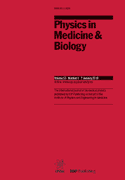
PHYSICS IN MEDICINE AND BIOLOGY
Scope & Guideline
Transforming Diagnostics and Therapies with Physics
Introduction
Aims and Scopes
- Medical Imaging Techniques:
The journal publishes research related to various imaging modalities including MRI, CT, PET, and ultrasound. This encompasses advancements in image reconstruction techniques, noise reduction, and the integration of artificial intelligence for enhanced imaging quality. - Radiation Therapy Innovations:
A significant focus is on the development and optimization of radiation therapy methods, including proton therapy, brachytherapy, and advanced treatment planning techniques. Research in this area often addresses dosimetry, treatment verification, and the biological effectiveness of different radiation modalities. - Dosimetry and Radiation Safety:
Research on dosimetric techniques for accurate dose delivery and safety in medical applications is a core area. This includes Monte Carlo simulations, real-time dosimetry, and studies on the biological effects of radiation. - Machine Learning and AI Applications:
The integration of machine learning and AI in medical imaging and treatment planning is a growing focus. This includes the development of algorithms for segmentation, classification, and predictive modeling in various medical contexts. - Biological Effects of Radiation:
Research examining the biological impacts of radiation exposure, including studies on cellular response, DNA damage, and the implications of different radiation types in medical treatments.
Trending and Emerging
- Adaptive Radiotherapy:
Research focused on adaptive radiotherapy techniques is gaining momentum, emphasizing real-time treatment modifications based on patient-specific anatomical changes. This trend is driven by the need for personalized treatment approaches that enhance patient outcomes. - Integration of AI and Machine Learning:
The application of AI and machine learning algorithms in medical imaging and treatment planning is rapidly expanding. This includes the development of neural networks for image segmentation, predictive modeling for treatment responses, and automated planning systems. - Flash Radiation Therapy:
Flash therapy, which aims to deliver ultra-high dose rates in a very short time frame, is emerging as a promising area of research. This technique has the potential to minimize damage to surrounding healthy tissues while maximizing tumor control. - Multimodal Imaging Techniques:
The integration of various imaging modalities for enhanced diagnostic capabilities is increasingly prominent. Studies exploring the combination of PET, MRI, and CT are becoming more common, aiming to leverage the strengths of each modality for better clinical outcomes. - Patient-Specific Dosimetry:
The focus on personalized dosimetry, considering individual patient anatomy and tumor characteristics, is on the rise. This includes using advanced computational methods and Monte Carlo simulations to tailor treatments to specific patient needs.
Declining or Waning
- Basic Theoretical Physics in Medicine:
There has been a noticeable shift away from purely theoretical physics discussions towards more applied research focused on clinical applications and outcomes. This reflects a broader trend of prioritizing translational research that has immediate relevance to patient care. - Conventional Imaging Techniques:
Although foundational, conventional imaging methods such as standard x-ray imaging seem to be receiving less attention compared to advanced modalities like hybrid imaging (e.g., PET/MRI) or novel imaging techniques utilizing AI. This shift indicates a movement towards more sophisticated imaging solutions that enhance diagnostic capabilities. - Traditional Dosimetric Techniques:
Traditional dosimetric approaches are gradually being overshadowed by innovative methodologies that incorporate machine learning and real-time monitoring systems. As technology advances, there is a clear trend towards adopting more dynamic and responsive dosimetry techniques.
Similar Journals
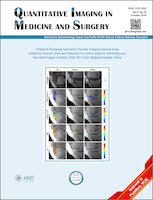
Quantitative Imaging in Medicine and Surgery
Elevating Medical Imaging: Bridging Research and PracticeQuantitative Imaging in Medicine and Surgery is an esteemed journal dedicated to advancing the field of medical imaging through rigorous research and innovative methodologies. Published by AME PUBLISHING COMPANY in China, this journal has established itself with an impressive Q2 quartile ranking in the field of Radiology, Nuclear Medicine, and Imaging, reflecting its dedication to high-quality research. With a comprehensive focus on quantitative imaging techniques, the journal covers a wide range of topics including image analysis, imaging biomarkers, and the integration of imaging in clinical practice, promoting collaboration between imaging specialists and clinicians. As an open access journal, Quantitative Imaging in Medicine and Surgery ensures that its articles are freely accessible, facilitating the dissemination of knowledge to a broader audience. With a commitment to fostering innovation in imaging science, this journal serves as an invaluable resource for researchers, professionals, and students alike, ultimately aiming to improve patient outcomes through advanced imaging strategies and technologies.
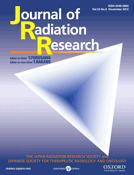
JOURNAL OF RADIATION RESEARCH
Connecting researchers to the latest in radiation science.JOURNAL OF RADIATION RESEARCH, published by Oxford University Press, is a prominent peer-reviewed journal focusing on the diverse fields of radiation science, including health, toxicology, and radiology. Since its inception in 1960, this open-access journal has provided a critical platform for the dissemination of high-quality research, making it accessible to a global audience of researchers, professionals, and students. With a consistent track record, the journal holds an impressive impact factor and is categorized in Q2 of Radiation studies and Q3 in Health and Toxicology as per the 2023 rankings, reflecting its influential role in shaping contemporary discourse in the field. The journal also boasts notable rankings within Scopus, further underscoring its importance in advancing knowledge and innovations related to radiation. Spanning from 1960 to 2024, the JOURNAL OF RADIATION RESEARCH remains at the forefront of scientific exploration and is essential reading for anyone committed to advancing the understanding of radiation and its effects.

Imaging
Connecting Researchers Through Open Access InsightsImaging, published by AKADEMIAI KIADO ZRT, is an esteemed open-access journal dedicated to the field of medical imaging, established in 2020. With an E-ISSN of 2732-0960 and based in Budapest, Hungary, this journal provides a vital platform for the dissemination of cutting-edge research and advancements in imaging techniques, especially in the realms of radiology, nuclear medicine, and ultrasound technology. While currently positioned in the Q4 category across multiple medical specialties, the journal continues to strive for improvements in visibility and impact, contributing to the evolving discourse in medical imaging. The journal aims to facilitate an inclusive and collaborative environment for researchers, professionals, and students, inviting them to share their findings and insights to enhance the field's development. With open-access availability since its inception, Imaging ensures free and easy access to its content, fostering a greater understanding and appreciation of innovative imaging practices worldwide.
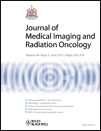
Journal of Medical Imaging and Radiation Oncology
Advancing the Frontiers of Medical Imaging and OncologyJournal of Medical Imaging and Radiation Oncology, published by WILEY, is a pivotal resource in the fields of oncology and medical imaging. With an impact factor reflective of its commitment to advancing research, the journal has maintained a robust reputation since its inception in 2008 and continues to thrive through 2024. It is indexed with an insightful ranking, with a Q2 classification in Radiology, Nuclear Medicine and Imaging, affirming its importance in these disciplines. This journal not only serves as an open access platform, allowing extensive reach and accessibility, but also fosters a scholarly community dedicated to the innovation of imaging techniques and radiation oncology practices. As a key player in disseminating crucial findings and advancements, it appeals to researchers, clinicians, and students who aim to contribute to the evolving landscape of medical imaging and cancer treatment methodologies. The journal is based in Australia, at 111 River St, Hoboken, NJ, and invites submissions that push the boundaries of current knowledge in this critical area of healthcare.
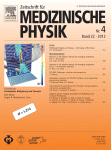
Zeitschrift fur Medizinische Physik
Pioneering research for a healthier tomorrow.Zeitschrift für Medizinische Physik is a prominent academic journal dedicated to advancing the field of medical physics, published by ELSEVIER. With an ISSN of 0939-3889 and an E-ISSN of 1876-4436, this journal has transitioned to an Open Access model since 2022, ensuring that cutting-edge research is readily accessible to a global audience. Based in Germany at RADARWEG 29, 1043 NX AMSTERDAM, NETHERLANDS, the journal encompasses a wide array of topics related to medical physics, thereby facilitating interdisciplinary collaboration. Its impressive categorization includes Q3 in Biophysics and Q2 in both Radiological and Ultrasound Technology and Radiology, Nuclear Medicine and Imaging as of 2023, reflecting its significant contribution to the scientific community. In the Scopus rankings, it holds respectable positions in its categories: #143/333 in Radiology and Nuclear Medicine, #28/63 in Radiological and Ultrasound Technology, and #83/152 in Biophysics, demonstrating its influence and reach. The journal's focus is not only on publishing innovative research but also on fostering education and discussion among researchers, professionals, and students in medical physics. Zeitschrift für Medizinische Physik invites scholars at all levels to contribute and engage with the content that shapes the future of this vital field.
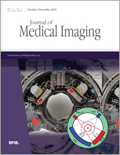
Journal of Medical Imaging
Revolutionizing Diagnostic Techniques for a Healthier TomorrowThe Journal of Medical Imaging, published by SPIE-SOC PHOTO-OPTICAL INSTRUMENTATION ENGINEERS, is an esteemed publication in the field of medical imaging, playing a pivotal role in advancing the discipline since its inception in 2014. With an ISSN of 2329-4302 and an E-ISSN of 2329-4310, this journal has garnered significant recognition, evidenced by its Q2 ranking in 2023 within the critical category of Radiology, Nuclear Medicine, and Imaging. The journal is dedicated to presenting cutting-edge research and innovations that enhance diagnostic imaging techniques and methodologies, appealing to a diverse audience of researchers, professionals, and students alike. Offering valuable insights into the interplay of optics and imaging technologies, it serves as a crucial resource for fostering knowledge and collaboration in the medical community. Notably, it holds a competitive rank of #136 out of 333 in its Scopus category, placing it in the 59th percentile—a testament to its influence and relevance in ongoing medical research. Therefore, the Journal of Medical Imaging stands out as an essential platform for disseminating transformative findings and innovations in healthcare imaging.

Japanese Journal of Radiology
Fostering Global Dialogue in Medical ImagingThe Japanese Journal of Radiology, published by SPRINGER, serves as a premier platform for disseminating cutting-edge research and clinical advancements in the fields of radiology, nuclear medicine, and imaging. With an ISSN of 1867-1071 and E-ISSN 1867-108X, this journal has established itself as a vital resource for practitioners, researchers, and students alike. Renowned for its high-quality peer-reviewed articles, it currently enjoys a respectable impact factor within the Q2 category of Scopus rankings, placing it in the 69th percentile among 333 journals in its field. The journal has seen consistent convergence of research from 2009 to 2024, further underscoring its commitment to advancing the understanding of radiological practices. Importantly, the journal offers Open Access options to facilitate widespread dissemination of knowledge, ensuring that vital research reaches its audience without barriers. Addressed in Japan, the Japanese Journal of Radiology plays a critical role in enhancing the global discourse on medical imaging, making it an essential resource for anyone engaged in this dynamic field.

Advances in Radiation Oncology
Innovating Radiotherapy for Better Patient OutcomesAdvances in Radiation Oncology, published by Elsevier Inc, is a premier international journal dedicated to the field of oncology and radiology, focusing on the latest groundbreaking research and innovations in radiation therapy. Launched as an Open Access journal in 2016, it has since carved out a significant niche in the academic community, featuring contributions that span a diverse range of topics including clinical practices, technologies, and outcomes in radiation oncology. With an impressive Q2 rankingOncology and Radiology, Nuclear Medicine and Imaging categories for 2023, and positioned within the 65th and 55th percentiles of Scopus ranks, it serves as an essential resource for researchers, medical professionals, and students alike. The journal not only emphasizes the importance of disseminating knowledge widely through its open access model but also aims to foster collaboration and innovation in the evolving landscape of cancer treatment. For those looking to stay at the forefront of radiotherapy research and advancements, Advances in Radiation Oncology is an invaluable platform for scholarly communication.
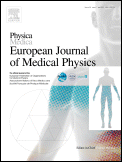
Physica Medica-European Journal of Medical Physics
Shaping the Future of Medical Physics ResearchPhysica Medica - European Journal of Medical Physics is a premier peer-reviewed journal published by ELSEVIER SCI LTD, dedicated to advancing the field of medical physics. Established in 1989 and serving as a critical platform for innovative research, this journal covers a broad spectrum of topics within biophysics, radiology, and imaging sciences, consistently ranked in the Q1 category across these disciplines. With an impressive impact factor that highlights its influence within the scientific community—ranking 52/333 in Radiology, 42/243 in Physics and Astronomy, and 35/152 in Biochemistry—the journal is a valuable resource for professionals, researchers, and students aiming to contribute to the technological and methodological advancements in medical physics. Physica Medica is committed to fostering open dialogue and collaboration within the global medical physics community, although it currently does not offer open access options. The journal's extensive citation history and ongoing relevance underscore its importance in the continuous evolution of medical science.
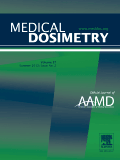
Medical Dosimetry
Bridging Theory and Practice in DosimetryMedical Dosimetry is a distinguished journal published by Elsevier Science Inc, dedicated to the advancing field of medical dosimetry and its applications within oncology, radiology, and nuclear medicine. With its ISSN 0958-3947 and E-ISSN 1873-4022, this journal serves as a crucial resource for researchers and professionals aiming to enhance their understanding of radiation treatment planning and dosage calculations. Encompassing a comprehensive range of topics from clinical dosimetry to technology assessment, Medical Dosimetry has been disseminating significant findings since its establishment in 1988, contributing to the continuous development of best practices in patient care and safety. The journal currently holds a Q3 ranking in various categories, reflecting its pivotal role in the research community, while not currently offering open access, it remains an essential reference for scholars advancing the techniques utilized in medical imaging and treatment. By fostering a platform for high-quality research, it aims to bridge the gap between theoretical studies and clinical applications, making it a vital addition to any medical library.